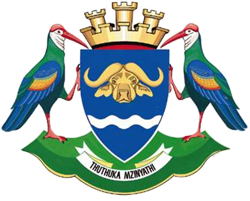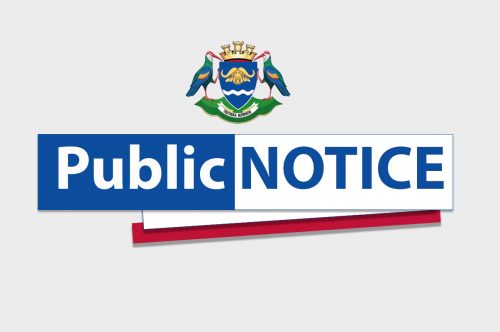About uMzinyathi
Umzinyathi is one of the 11 district municipalities ("districts") of KwaZulu-Natal province in South Africa. The seat of Umzinyathi is Dundee. The majority of its 456 452 people speak IsiZulu (2001 Census).
The district code is DC24ts of four local municipalities. That is Endumeni, Umvoti, Nquthu and Msinga.

Custodians of History and Culture
Umzinyathi District has a total area of 8 079 square kilometres and is located in the north central areas of KwaZulu-Natal.The District lies between the main N3 corridor between Durban and Gauteng and the Coastal Corridor, running along the east coast. Umzinyathi includes some of the poorest and most underdeveloped rural areas of KwaZulu-Natal, most notable the Msinga and Nquthu Municipalities.The population of the region numbers about 456 454 people. Of the population, 93% are rural and 7% are urban. The more developed urban areas include Dundee, which is the administrative seat of Umzinyathi District Municipality, and Greytown. Greytown can be viewed as a strong regional centre with substantial commercial and agricultural activity. In Nquthu and Msinga there is a dominance of the three peri-urban settlements of Tugela Ferry, Pomeroy and Keates Drift.The population densities of these three areas are higher than those of the rest of the area. The District has 17 TribalAuthorities. Endumeni is the only B Municipality that does not have any tribal land.alt The majority of the land (60%) is under the control of the Ingonyama Trust situated mainly in Nquthu and Msinga.

Economy
Most industry in the area is associated with agriculture or hand work (carpets, beadwork) by trained artisans.The use of natural products, water, by aQuellé, is a national brand. The municipal area has extensive grasslands in the north supporting the primary agricultural sector based on cattle ranching for beef, small scale sheep and mixed farming and maize cultivation. In the southern areas substantial forestry is prevalent. Sugar cane and smaller scale fruit farming such as avocado and kiwi fruit cultivation also occur. The area has high potential for growth in agricultural crop production (maize, soybean and sugar cane). In rural areas, particularly at Umsinga and Nquthu, animals are not kept as farming commodities and are seldom slaughtered or sold. There is a need for farmer support programmes to improve stock management. It is important to broaden rural livelihoods through targeted agricultural production. There is very little product beneficiation with most products being exported to major markets for further processing and / or export.
Mining
Mineral deposits found in the District include coal and metal ores. Dundee and Glencoe forms part of the so called Coal Rim of KwaZulu-Natal, which have over the past decade been negatively affected by a substantial decline in the coal mining sector which 112 Umzinyathi District MunicipalitUmzinyathi District Municipalityy previously formed the economic base of the areas.However, the coal mining industry is undergoing a restructuring process and there is interest in the small scale regeneration of the coal belt for SMME development. A small amount of stone quarrying occurs in the District.
Tourism
Umzinyathi Municipality, in conjunction with its north western neighbour, Amajuba Municipality, is branded as the ‘custodian’ of the Battlefields region of the Zulu Kingdom. The District has in the past been the scene of fierce battles involving the British, Boers and Zulus. The ruins of several forts remain dotted throughout the District e.g. Fort Ahrens, Fort Liddle, Fort Mizpah.The Battlefields form a vital role in the spatial economy of the Province from a tourism perspective.The revenue from tourism related to the Battlefields is contributing to the District economy, particularly at Endumeni. Visitors to the area are mainly domestic tourists, although some foreign tourists pass through the region en route to other attractions outside the node such as the Drakensburg, Swaziland or the Kruger National Park.The key challenge is to upgrade the economic node’s tourism attractions and improve its accommodation facilities in order to retain a greater share of tourism activity.
At Isandlwana, in 1879, the Zulu army attacked a British regiment under Lord Chelmsford, resulting in heavy causalities. At Rorke’s Drift, in 1879, a Zulu regiment tried to break through stone walls and makeshift barricades defended by British soldiers from Monmouthshire. In October 1899,Dundee was the scene of the first major engagement of the South African War, between Generals’ Lucas Meyer and Penn Symons. The strong traditional culture prevalent particularly in Msinga and Nquthu is a valuable asset that must be preserved and valued. These traditional areas provide support mechanisms for the communities, as well as living custodians of the culture.Other tourist sites include 13 private game reserves and one 18 000 ha proclaimed conservation area.There are two natural heritage sites: Fugitives Drift and Hlathikulu atWasbank.Two wild cycad areas will be added to this list in the near future. Other significant sites include waterfalls, raptor breeding sites, a yellow wood forest and wetlands, including Paddavlei and GladstoneVlei.
Latest News
Lorem ipsum dolor sit amet, consectetuer adipiscing elit

click here to download – newsletter hdhd 4th q

uMzinyathi Newsletter August 2022 Click Here to Download

Click here to download – Audit Committee members

Click here to download – MANAGER REVENUE ADVERT

